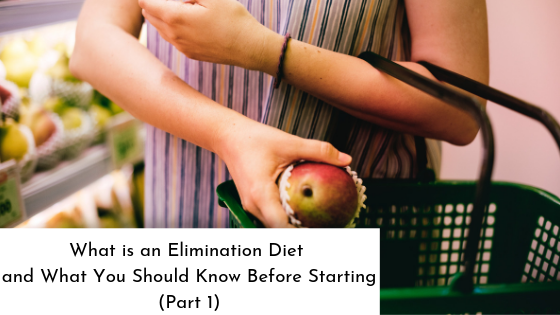|
In this three-part blog series, I will be breaking down a lot of information centered around elimination diets that will help you in your health journey. In the first part, I will be discussing what an elimination diet is, why it can be so effective at getting closer to the root cause of your symptoms, and what you should know before starting so that you’re successful. In the second part, I will review the top foods that should be eliminated when you are dealing with chronic symptoms or an autoimmune disease like Hashimoto’s and what foods you should incorporate. And in the third post, I will review when it’s helpful to test for food sensitivities and the lab I use in practice.
Address the Root Cause of Symptoms with an Elimination Diet If you’re struggling with your health and are wanting to reverse disease, lose weight, or put a stop to chronic symptoms, then a food elimination diet may be right for you. Food has a profound ability to either heal us or hurt us. A food that is typically considered healthy like whole grain bread, tomatoes, or oats may be causing a lot of inflammation and tissue damage in someone who has a sensitivity to those foods. If we’re putting things that are typically thought of as healthy into our body day after day that is unknowingly causing inflammation, it will be very difficult, if not impossible in some cases, to overcome chronic symptoms. It is for this reason I always address a clients diet first before moving onto uncovering other root causes for their symptoms that could be related to other things like infections, toxins, or other imbalances in the body. If you’re suffering from chronic symptoms or are overweight, you’re in a state of chronic inflammation, which is directly tied back to the health of your gut. Research has found that when there is a breakdown in one's health, there is damage to their gut known as leaky gut. So, when you eliminate your food triggers, you’re automatically lowering inflammation and taking the first step to healing your gut. Leaky Gut and Food Sensitivities In leaky gut or intestinal permeability, the tight junctions that act as a barrier within the gut are damaged. When this occurs, macromolecules such as undigested food, bacteria, viruses, allergens, and toxins can get through these “junctions” and trigger an immune response.2 Research has strongly linked leaky gut to the development of autoimmune diseases, obesity, and other chronic inflammatory disorders.3,4,5,6 There are many triggers for developing leaky gut, but we will focus on one of them, which is food. Food sensitivities cause irritation and inflammation in the body every time that offending food is consumed. This perpetual cycle of inflammation leads to many symptoms, along with the potential to develop other food sensitivities down the road if not addressed. Food as Medicine Inflammation is driven by sensitivity to foods, so by removing the food, you’re removing the inflammation and allowing your gut and your body to heal. Instead of using meds to mask symptoms, in an elimination diet, you will be using food to uncover symptoms. When you fully eliminate foods that you’re sensitive to and then reintroduce them back into your diet, your body will exhibit certain symptoms to let you know that inflammation is going on and it sounds the alarm. These symptoms can be very vague or very straightforward, but they are typically only apparent once you have reintroduced them after you have fully removed them from your diet for at least two to three weeks. Here is a list of the top symptoms associated with food sensitivities. Common Symptoms of a Food Sensitivity Fatigue Irritability Mood Disorders Joint Pain Bloating Constipation Gas and stomach upset Eczema, acne, and other skin problems Brain fog Weight gain Cold sores Lung or nasal congestion Headaches or migraines ADHD and other behavioral issues in children Difference Between a Food Intolerance/Sensitivity and a Food Allergy Food allergies trigger an acute immune response, and the symptoms typically develop within a few minutes to a couple of hours after the food is ingested. Symptoms can be life-threatening like that seen with anaphylaxis, or the symptoms can just be uncomfortable and result in hives, rashes, or swelling, for example. Food intolerances and food sensitivities are harder to detect because symptoms are not as straight-forward like that of an allergy and can take as long as 24 to 72 hours to develop. The term food intolerance can mean either an immune or non-immune mediated response. For example, lactose intolerance, a condition where the person lacks the enzyme needed to completely digest lactose, is not an immune reaction and does not create the type of inflammatory response and chronic symptoms that we will be discussing in this post. Often, the term food intolerance is used interchangeably with food sensitivity. For the purpose of this article, I will be using the term food sensitivity. Using the Steps of the Scientific Method to Determine Food Triggers You will be using the steps of the scientific method to determine your food triggers. It’s a process and something you don’t want to rush into without fully doing your research because the chances of you failing can be quite high. However, if you’re unsuccessful in your first attempt, don’t worry. Learn from your mistakes and move forward. Here are a few tips to ensure your success: Ask a question: Which foods am I sensitive to? Do Background Research: Everyone responds differently to food, so this is where it can be a little difficult in deciding which foods to initially eliminate from your diet. I suggest starting with the foods that tend to cause people the most trouble and are also the ones they have the most difficultly giving up: gluten, dairy, grains, and eggs. However, in my next post, I’ll be going into more detail on the foods that you should eliminate depending on your set of symptoms, foods that commonly cross-react with gluten if this is one of your triggers, and inflammatory foods that everyone should eliminate when doing an elimination diet. Construct a Hypothesis: Example, if I eliminate gluten and dairy, then my joint pain will go away. Test Your Hypothesis: Removal Phase Ok, folks, this is where it gets even trickier. If you have only eliminated one food from your diet, there is a strong possibility for no improvement in your symptoms. This is because if you’re reacting to a food, then you likely have more than one food sensitivity. It’s best to eliminate all of the top trigger foods at the same time for a minimum of two weeks. However, if you have been suffering from chronic health problems for a long time, you will likely need to eliminate them for a total of four to six weeks before you reintroduce them. For this to be a fair test, you will also need to ensure you’re not accidentally exposing yourself to the very foods that you’re trying to eliminate from your diet. Cross-contamination can occur when dining out or at home, so be sure to discuss your restrictions with those that are in charge of your food prep. Reintroduction Phase: After a period of two to six weeks, and possibly longer depending on your symptoms, you will test your body’s response to each food separately. You will know when it’s a good time to test when your symptoms are gone. If your symptoms are not gone, then you likely have other foods that are triggering an immune response or, very commonly, a pathogen could be at the root of your symptoms. That’s why I find it so important to start with diet, then move quickly onto investigating other root causes for symptoms if no symptom relief. Remind yourself that it’s a process, but you have to start with the fundamentals first. And remember, you never want to reintroduce food during periods of high stress, illness, or active symptoms as this will only interfere with your results.
Analyze Your Data and Draw a Conclusion: After doing this a while now both in myself and with my clients, it’s very interesting to see how symptoms surface once problem foods are reintroduced, whereas there were no symptoms noted while those foods where eaten. Once the immune system is able to rest and recover, it allows for ample energy to exhibit an immune response to that food resulting in apparent symptoms. Once trigger foods are identified, remove them for a minimum period of 3 months before trying to reintroduce and supplement with gut-healing herbs like L-glutamine, Marshmallow Root, and Slippery Elm. Tips for a Successful Elimination Diet An elimination diet can be challenging. But if you shift your way of thinking it can be very empowering. You’re taking control of your health and will likely be doing something that you may have never done before. You will be putting more thought and awareness into your food that can sometimes cause anxiety and unsuccessful completion if you’re not prepared. Here are my top tips to get you through an elimination diet successfully:
Getting to the bottom of food sensitivities can sometimes take time, but everyone’s journey is different. However, if you can commit to your eliminations, you can look forward to a healthier and happier life. If you need help, you can contact me. References
|
Hello!I'm Meagan Reynolds- a certified functional medicine practitioner and dietitian located in Nashville, TN. After overcoming my own health challenges with hypothyroidism, I was motivated to create my own practice where I help women reverse their thyroid, gut, and hormonal issues so they can reclaim their health. Archives
July 2023
Categories
All
|



 RSS Feed
RSS Feed